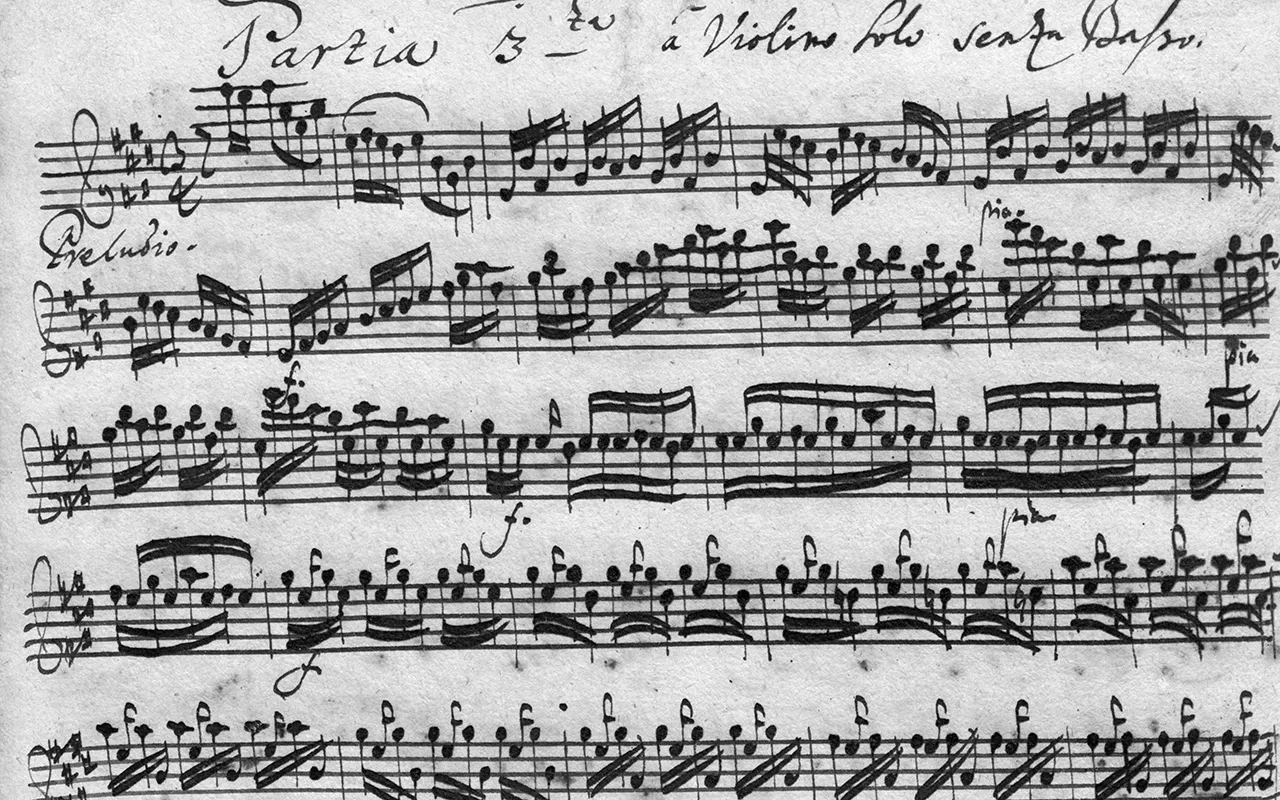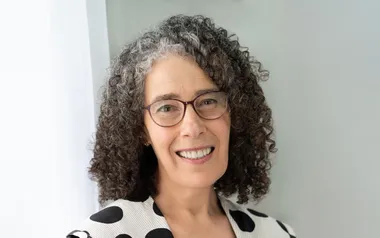Blog
AUGUST 20, 2020
Four Fiddles for One Partita

During the early days of COVID, musicians were deprived not only of their audiences, but of each other. Music is an inherently social activity, and when gathering was suddenly prohibited back in March, music requiring more than one player was at the very least inadvisable. So what did so many of us do? We turned to Bach. For string players, the solo works of Bach are as close as we have to a sacred text. During our years as music students, we spent innumerable hours in the solitary confinement of a practice room studying them. So it was natural then, almost reflexive, that we would turn to Bach once again when forced into a very different kind of confinement.
James Ehnes, Augustin Hadelich, and a whole crew of A-list violinists recorded a collaborative video of the famous D minor Chaconne, with each musician submitting a few variations from their living rooms. Vijay Gupta shared his daily Bach practice and musings from his home in Los Angeles. There was suddenly a flood of Bach circulating on social media platforms. It wasn’t just string players. Saxophonists, clarinetists. singers, pianists, and musicians of all stripes were suddenly sharing their arrangements and performances of Bach. Interestingly enough, not all of it was of the solo variety. Acapella, a suddenly ubiquitous app, allowed single musicians to record multiple voices and synchronize them into polished ensemble performances. So maybe it was more than just the solo works of Bach that offered instant solace in this time of adversity. Perhaps it was the profundity and spirituality of Bach’s musical voice. But for string players, it was clear where the low-lying fruit hung, and we all seemed to go there at once.
Greg Ewer
Violin, Oregon Symphony
An allemanda is a Renaissance and Baroque dance, and one of the most popular instrumental dance styles in Baroque music. It was considered ‘very old fashioned’ even in the Baroque era, and characterized as grave and ceremonious. It is often the first movement of a Baroque suite of dances, as in Partita No.1 in B minor BWV 1002. Here each movement is followed by a variation called Double in French, which elaborates on the chords of the prior movement.
Personally, it was very therapeutic to practice Allemanda and Double. It exudes an order and calmness which we all need in this time of uncertainty.
Shin-Young Kwon
Violin, Oregon Symphony
When I was young, one of my favorite pastimes was poring over the many stacks of music we had lying around the house, which ignited my imagination as a nascent musician. In the days before I could actually read the notes on the page, I’d set up a keyboard score at the piano and “concertize” for the house, much to my parents’ amusement (and our pets’ dismay), or I’d assemble my stuffed animals in a row, set some music on a chair and “conduct” my little orchestra along to whatever was playing on the stereo. More difficult was finding a way to “play” the violin music I’d find; occasionally, my mom would gamely agree to set me up with her violin under my chin in front of a music stand, but I’d have to sit motionless in order to not drop the precious instrument on the floor.
The violin music I’d uncover on the shelves intrigued me the most, particularly a large bound book with a blue cover and bold black lettering: “J.S. Bach: Six Sonatas and Partitas for Violin Solo (ed. Ivan Galamian).” Each page was a mystery: notes running in an endless stream with no breaks, notes stacked on top of one another like cups on a shelf, notes strung together in a cascade of dark lines… it seemed like complicated stuff! It wasn’t until many years later, as an intermediate violinist, that I attempted to play any of them myself. I’d never get very far, though, encumbered by rhythms and string crossings and dense chords that made my fingers hurt.
That very copy of the Bach sonatas and partitas is still in my possession, filled with markings from various teachers I’ve had over the years. I also see my own sloppy scrawl from high school days, all-caps reminders to “COUNT” and “SAVE BOW.” It’s impossible for me to extricate the music itself from its place in my musical life and education, at times a confounding hurdle, others as a source of solace and contemplation. During these quaran-times, it’s a challenge and a joy to have the opportunity to reconnect with this cornerstone in the violin repertoire.
Emily Cole
Violin, Oregon Symphony
I remember the first time I heard the music of Bach. When I was five, my mom bought me a recording of Pinchas Zukerman conducting the English Chamber Orchestra in a performance of the Brandenburg Concerti, and I’ve been a Bach fanatic ever since. It was magical, indescribable stuff. I had no idea about the spirituality that drove Bach to represent the divine in his music, I just knew that it sparkled, and I couldn’t stop listening to it.
The B minor Partita is formed in the baroque style of four dance movements, Allemande, Courante, Sarabande, and Bourree. Each of these movements is followed by a variation called Double, which elaborates on the chords of the prior movement. I’ll be performing the final Bourree/Double on this Friday’s livestream performance.
It’s a testament to the deeply felt collegiality in 45th Parallel Universe that this performance represents. We are able to share ideas, play for each other, and share our love for this music because of the wonderful technological gift that our dear friend Danny Rosenberg has created. My sincere thanks to Danny and my wonderful colleagues for making this program happen!
Ron Blessinger
Executive Director, 45th Parallel Universe
Don’t forget to share this post!
YOU MAY ALSO LIKE…

Take Me to the River
On April 30th, 45th Parallel will perform Treasured Resources: Water and Music, featuring the world premiere of Waterways by Columbia Riverkeeper composer…

Poulenc was my OG
For those of you who might not be aware, OG is an acronym for Original Gangster. Originating in the 1970s, OG was used to describe a gang member specifically from…

Groovin’ with Andy
I’ve never been comfortable with the traditional idea of what a violinist is or should be. Maybe it’s that I always felt like I was playing an unwinnable game of…